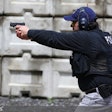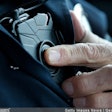I was the defense use-of-force expert on the case, and I have read the jury instructions.
I've tentatively concluded that the jury went with involuntary manslaughter on the basis that former Bay Area Rapid Transit (BART) Officer Johannes Mehserle was engaged in a lawful act—the arrest of Oscar Grant III—and that he accidentally drew his handgun while intending to draw his TASER.
That being said, the jury found that he was criminally negligent in that effort in that he didn't reasonably follow policy or training. Let's analyze three key areas of my testimony that officers and trainers ought to consider:
First, a TASER is sometimes used in imminent deadly force scenarios. Many lives have been saved, but sometimes officers are hurt in the process. It is important to do this as safely as possible.
Second, there have been six prior weapon-confusion cases in the past nine years where an officer shot someone while intending to use his or her TASER.
And third, it is essential that trainers put officers through their paces with training that is dynamic, stress-inducing, and requires officers to make quick force-options decisions. The training must truly test the officer's ability to be ready for stressful encounters on the street.
As a common thread of all six weapon-confusion cases, the officer's strong hand was involved. Therefore, consider requiring an officer's TASER to be in weak-side holsters requring a weak-hand draw to reduce the possibility of another tragic case. Dr. Bill Lewinski (Force Science Research Center) and I have discussed this issue, and we believe that it would signfiicantly reduce the risk of having a weapon-confusion incident.
Finally, several media outlets are reporting that the jury also found that the California law involving the use of a gun during the commission of a crime (the so-called "gun enhancement") applied in this case. This one is a head-scratcher, because according to my reading of the jury instructions on that issue he would have had to intentionally use the firearm. That seems contrary to the involuntary manslaughter verdict.
We'll see how the judge handles all of this at sentencing on Aug. 6. Regardless of the outcome, this is a tragic case with no winners.
Greg Meyer retired as a captain from the LAPD. A consultant and expert witness on use-of-force issues, he is a member of both the National Advisory Board of the Force Science Research Center and the POLICE Advisory Board and serves as chairman of the Los Angeles Police Historical Society.












